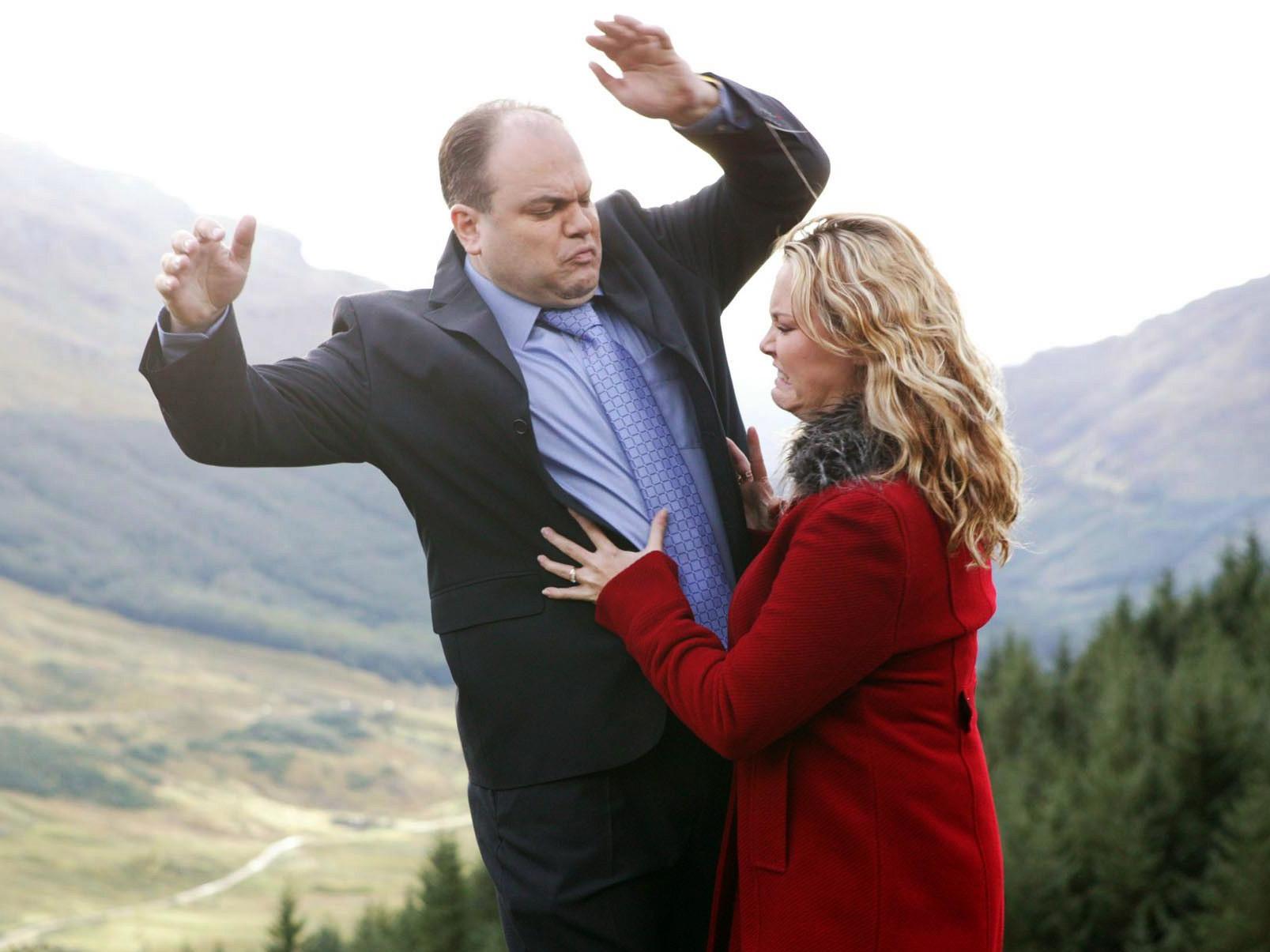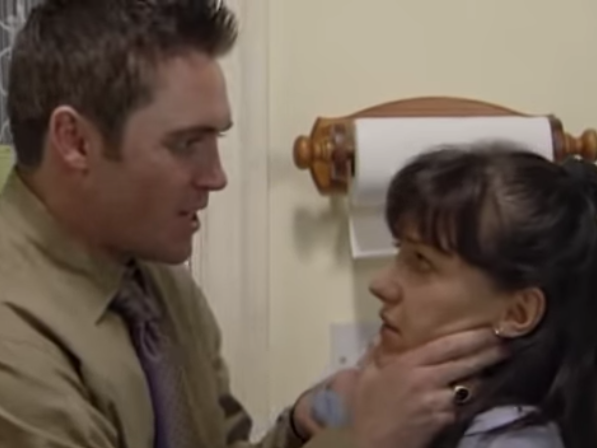EastEnders at 35: How a British soap opera institution came to normalise extreme violence
Whether it’s Ian Beale getting his head flushed in a toilet or Barry being pushed off a cliff, ‘EastEnders’ has long painted acts of vicious brutality as entirely everyday. As the show celebrates its 35th birthday, Adam White surveys the cultural damage


Your support helps us to tell the story
From reproductive rights to climate change to Big Tech, The Independent is on the ground when the story is developing. Whether it's investigating the financials of Elon Musk's pro-Trump PAC or producing our latest documentary, 'The A Word', which shines a light on the American women fighting for reproductive rights, we know how important it is to parse out the facts from the messaging.
At such a critical moment in US history, we need reporters on the ground. Your donation allows us to keep sending journalists to speak to both sides of the story.
The Independent is trusted by Americans across the entire political spectrum. And unlike many other quality news outlets, we choose not to lock Americans out of our reporting and analysis with paywalls. We believe quality journalism should be available to everyone, paid for by those who can afford it.
Your support makes all the difference.One of my earliest memories is of a woman named Saskia being beaten around the head with an ashtray. It was in a nightclub, her killer breathing heavily as she fell to the floor dead. I was six or seven and terrified. It happened in an episode of EastEnders – a funny, bleak and very British soap opera that is also bizarrely violent.
For me, EastEnders, which turns 35 this week, is synonymous with my childhood in the early Noughties, a time many consider to be the show’s creative peak. It was an era in which the Slater sisters mingled with Martin Kemp in the Queen Vic, and everybody clutched their pearls when it turned out that Lisa had shot Phil. Because I was so young at the time, it means that most of my memories of the show exist in flashes: of bad earrings, the chippie, Sonia’s trumpet and Barbara Windsor wailing. It’s the brutality that sticks out, though.
I remember a house erupting in flames because children were playing with cigarettes. I remember Little Mo’s face being pushed into her Christmas dinner by her husband. I remember an Irish character I fancied being assaulted and left for dead in muddy woods. The latter may not have happened exactly like that, though. I specifically remember looking away from the TV at that point, burying my head in a copy of the Radio Times to block out the noise.
EastEnders has always normalised a specific strain of extreme violence, broadcast up to four times a week since 1985 in pre-watershed timeslots. Because of when it’s shown, it’s often been considered family-friendly entertainment, or a snapshot of reality that could only be scary if you were in denial about the world.
That EastEnders is merely reflecting reality has long been the BBC’s defence whenever its barbarity is put under the microscope. And it has, a lot. In 2002, the aforementioned Little Mo storyline, which involved rape, fire and a steaming iron to the head, was praised for its realistically horrifying depiction of domestic violence. But it also earned hundreds of complaints, with the Broadcasting Standards Commission declaring that the show had gone “too far”. Not, they added, because of the specific content of the story, but because it had a “stark and graphic quality unsuitable for pre-watershed transmission”.
In 2008, the commission, now existing under the banner of Ofcom, had further problems with a scene in which a gang brutalised the Queen Vic. The “persistent attack on people and property” was deemed overboard for an 8.30pm timeslot, while its savagery “was not appropriately limited for this time of the evening when many children are available to view television”.
Recent years have seen Ofcom similarly raking the BBC over the coals for scenes in which young Bobby Beale hit his mother around the face with a hockey stick and, last December, when Phil Mitchell beat a bound and gagged man to a pulp.
In every instance, the BBC will argue that EastEnders is justified in depicting its more brutal dramatics as it is social drama, and that its insistence on eventually punishing those responsible is justification enough for its portrayal. “Viewers will soon see Bobby arrested by police and he and his family will be facing up to his behaviour in the most serious of ways,” a spokesperson said in 2016, after that hockey stick attack. But it’s also a further example of the show’s unbalanced relationship with reality, and how often it pushes the idea of unflinching factuality while succumbing regularly to fantasy.

EastEnders isn’t the real world. For every appropriately grisly story of domestic violence it has depicted, or its more sensitive portrayals of autism, teenage pregnancy and mental illness over the years, there are ones of contrasting salaciousness. Those arcs, usually involving crime or infidelity or murder, are more akin to US soaps awash in heightened set pieces and gloss. Any attempt at relatability suddenly flies out the window. Unlike Max Branning in an episode of the series broadcast during Easter of 2008, few of us have ever had our drinks spiked by our partners before they bury us alive.

Watch Apple TV+ free for 7 days
New subscribers only. £8.99/mo. after free trial. Plan auto-renews until cancelled

Watch Apple TV+ free for 7 days
New subscribers only. £8.99/mo. after free trial. Plan auto-renews until cancelled
It means that the show has always struggled to align the real with the unreal. At its heart is the human and almost fly-on-the-wall sensibility of Sixties kitchen-sink dramas, along with the fag-ash grit of British filmmaking at the time it first debuted. But it’s also been long attracted to sensation, too, with a propensity towards the absurdly outlandish. How else to explain a 2017 storyline that climaxed with a major character drowning on her wedding day, side-by-side in a swimming pool with her sister, who'd suffered a cocaine-induced heart attack?
EastEnders has often been pleasurable, its fluctuating relationship with the real world part of its inherent charm. But its place in the fabric of the UK family home has also been built on a dangerous lie, indoctrinating children to a level of violence and horror that is largely extreme and fantastical, but presented as entirely ordinary.
Older viewers can laugh at the sight of Janine Butcher flinging Barry off a cliff, or Phil Mitchell succumbing to crack addiction. But for youngsters watching it regularly with their parents or older siblings in an early-evening timeslot, it can leave a destructive and traumatic imprint – and one that lasts long after the sound of those iconic “duff duffs”.
Join our commenting forum
Join thought-provoking conversations, follow other Independent readers and see their replies
Comments